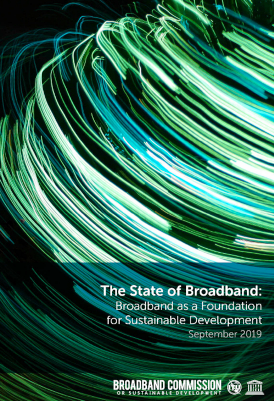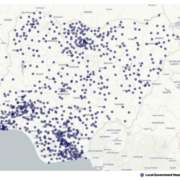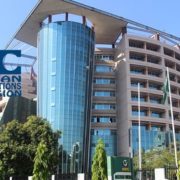- Focus shifts to ‘meaningful universal connectivity’ to drive global development
Traditional approaches to driving internet network roll-out and uptake are failing to reach the remaining half of the global population still lacking online access, according to a new report issued in New York today by the Broadband Commission for Sustainable Development.
To counter slowing global growth, the report advocates for new collaborative strategies to drive the concept of ‘meaningful universal connectivity’ through greater emphasis on resource sharing and a more holistic approach that treats broadband as a basic public utility and vital enabler of global development.
The notion of ‘meaningful universal connectivity’ encompasses broadband that is available, accessible, relevant and affordable, but also that is safe, trusted, user-empowering and leads to positive impact. The report advocates for this new concept to underpin policy makers’ new digital strategies, as governments seek to find new ways to finance network roll-out and reach unconnected populations.
The State of Broadband 2019: Broadband as Foundation for Sustainable Development reveals that global growth in the percentage of households connected to the internet is slowing, rising only slightly to 54.8% from 53.1% last year. In low-income countries, household internet adoption improved by a mere 0.8% on average.
Data on individuals using the internet also indicated slowing global growth in 2018, as well as a slowing growth in developing countries, which are home to the vast majority of the estimated 3.7 billion still unconnected.
“Our collective ownership to implement the Commission’s recommendations will necessitate all of us to provide resources – both financial and technical know-how – to create the much-needed impact of our work,” noted H.E. Paula Ingabire, Minister of ICT and Innovation, Republic of Rwanda, representing President Paul Kagame, who Co-Chairs the Commission.
“Connecting the world’s population to the internet is about collaboration, collective approaches and partnerships – among different stakeholders, across different sectors and across borders,” said fellow Commission Co-Chair Carlos Slim. “It is about understanding the needs of people in terms of connectivity, literacy, access to content in different formats and languages, and services. It is about bringing the costs of services and devices down. And it is about empowering people who lack standard basic ICT skills with the means to participate in the digital ecosystem.”
Mobile broadband continues to dominate
The State of Broadband 2019 reports that while almost one billion new mobile subscribers have been added in the five years since 2013 (4.2% average annual growth), the speed of growth in mobile connections is also slowing, particularly at the bottom of the pyramid. Mobile network coverage improved much more slowly in low-income countries, with a mere 22% improvement in 4G coverage in the past five years, compared with a 66% increase in lower-middle-income countries.
In 2018, 4G overtook 2G to become the leading mobile technology across the world, with 3.4 billion connections, accounting for 44% of the total. 4G will soon become the dominant mobile technology, surpassing half of all global mobile connections in 2019, and expected to peak at 62% of all mobile connections by 2023.
Data show that of the 730 million people expected to subscribe to mobile services for the first time over the next seven years, half will come from Asia Pacific, and just under a quarter from Sub-Saharan Africa.
New strategies to connect the unconnected
The State of Broadband 2019 takes a nuanced look at the nature of broadband connections globally, observing that a false dichotomy between ‘connected’ vs. ‘unconnected’ can hide grave disparities in access and present an inaccurate picture of the realities on the ground in many countries. It notes, for example, that while a connection speed of 256kbps is counted as ‘broadband’ for statistical purposes, users connecting at such speeds cannot enjoy a full online experience comparable to that of users accessing the net over the 100Mbps-or-better connections now considered ‘standard’ in the world’s wealthier nations.
The report notes that individuals who are online may not fit into neat binary statistical categories (‘users’ vs. ‘non-users’). Instead, people are adopting a wide range of ways interacting with, and benefiting from, the internet. There is also growing recognition of the potential downsides and risks of technology adoption, particularly for more vulnerable populations including women and children, who may become victims of cyber stalking, online aggression and hate speech, or internet-enabled child abuse, exploitation, or bullying.
Towards ‘meaningful universal connectivity’
“This year’s State of Broadband report encourages us to think in terms of ‘meaningful universal connectivity,'” said ITU Secretary-General Houlin Zhao, “because digital inclusion can only be meaningful and effective if and when Internet users feel empowered to use the technology – and when the technology is affordable, attractive and safe.”
The 2019 edition of the report also reviews progress on the Commission’s seven key advocacy targets and emphasizes the need to implement policy interventions that ensure broadband access benefits all members of society. It summarizes seven years of policy advocacy as well as the 66 policy recommendations presented in previous editions of the report, which have driven the global dialogue around broadband implementation since the Commission’s inception in 2010.
To accelerate broadband adoption and meaningful universal connectivity, the report stresses the need to go beyond ‘business as usual’ policy prescriptions and projects, and towards more collaborative models based on resource sharing and holistic approaches.
The report also presents updated data measuring progress towards the Commission’s seven advocacy targets (Making broadband universal; Making broadband affordable; Getting people online; Acquiring minimum digital skills and literacy; Using digital financial services; Getting businesses online; and Achieving gender equality in access to broadband by 2025). At current rates of progress it seems unlikely that all the Commission’s targets will be reached by 2025.
UNESCO’s Director-General, Audrey Azoulay, particularly stressed the vital importance of improving digital literacy. “Today, the main factor preventing people in developing countries from using mobile internet is not affordability but poor literacy and digital skills,” she said. “Gender inequality in digital technology is even more alarming. Women are less likely to have internet access than men, and this gap is widening. The 2019 UNESCO publication ‘I’d Blush If I Could’, produced under the auspices of the EQUALS Global Partnership, illustrated that women are now four times less likely than men to be digitally literate, and represent just 6% of software developers.”
Download the Report Highlights here.
Download the full report here.





























